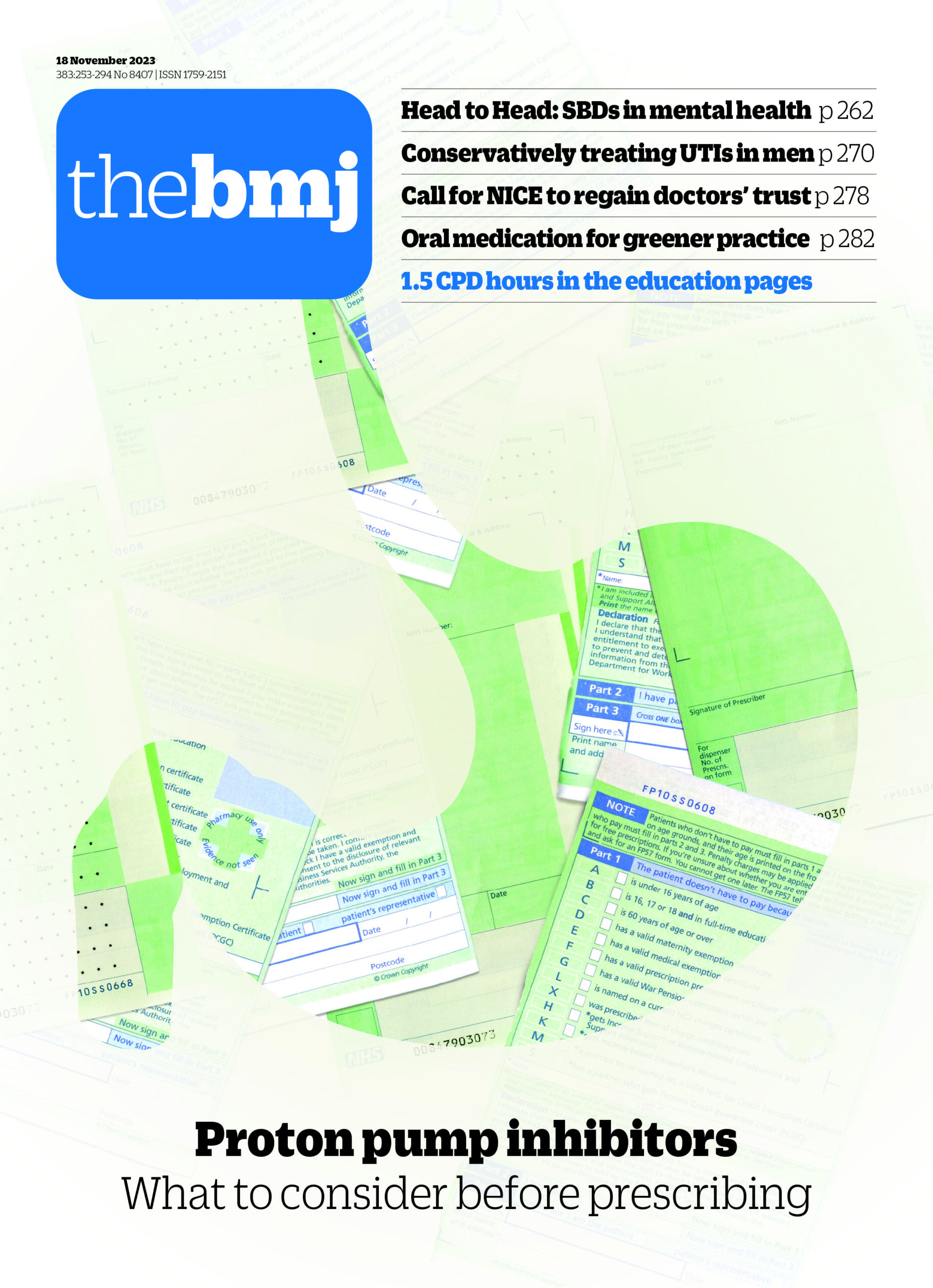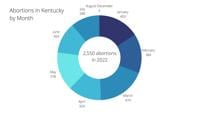
Abstract
Objective To determine whether patient-surgeon gender concordance is associated with mortality of patients after surgery in the United States.
Design Retrospective observational study.
Setting Acute care hospitals in the US.
Participants 100% of Medicare fee-for-service beneficiaries aged 65-99 years who had one of 14 major elective or non-elective (emergent or urgent) surgeries in 2016-19.
Main outcome measures Mortality after surgery, defined as death within 30 days of the operation. Adjustments were made for patient and surgeon characteristics and hospital fixed effects (effectively comparing patients within the same hospital).
Results Among 2 902 756 patients who had surgery, 1 287 845 (44.4%) had operations done by surgeons of the same gender (1 201 712 (41.4%) male patient and male surgeon, 86 133 (3.0%) female patient and female surgeon) and 1 614 911 (55.6%) were by surgeons of different gender (52 944 (1.8%) male patient and female surgeon, 1 561 967 (53.8%) female patient and male surgeon). Adjusted 30 day mortality after surgery was 2.0% for male patient-male surgeon dyads, 1.7% for male patient-female surgeon dyads, 1.5% for female patient-male surgeon dyads, and 1.3% for female patient-female surgeon dyads. Patient-surgeon gender concordance was associated with a slightly lower mortality for female patients (adjusted risk difference −0.2 percentage point (95% confidence interval −0.3 to −0.1); P<0>
Conclusions Post-operative mortality rates were similar (ie, the difference was small and not clinically meaningful) among the four types of patient-surgeon gender dyads.
Introduction
Surgical care contributes to the management or cure of approximately a third of the global burden of disease.12 Surgical outcomes reflect a complex interplay of patient comorbidities, disease characteristics, and perioperative care delivery. To date, much focus has been on features of the health care system (ie, hospital level volume3) and of the surgeon as they relate to surgical outcomes through perioperative care delivery.4567
However, emphasis is increasingly being put on how the sociocultural characteristics of the treating physician affect patient outcomes. Gender concordance between patients and physicians has the potential to improve the quality of care and patient outcomes through more effective communication,891011 reduced (implicit and explicit) sex and gender bias,12 and better rapport.13 Research in specialties outside of surgery has shown that the patient-physician gender concordance was generally associated with higher quality processes of care1415161718 and improved patient outcomes.519 Multiple mechanisms explain how patient-surgeon gender concordance can potentially improve patient outcomes. For instance, improved communication and rapport between patients and surgeons could encourage patients to comfortably ask questions and report subtle post-operative symptoms, potentially leading to improved outcomes if surgeons proactively address these concerns. Additionally, a better patient-surgeon relationship could increase the likelihood of patients adhering to post-operative care recommendations, including proper medication use.
Evidence is limited about the effect of patient-surgeon gender concordance in outcomes of patients undergoing a surgical procedure. The only study on this subject, conducted in a single Canadian province, identified an association between patient-surgeon gender concordance and improved outcomes among female patients undergoing elective procedures; no difference was found for female patients involved in non-elective procedures, or for male patients (elective and non-elective procedures).5 The study also showed significant heterogeneity based on the type of procedure performed. Nevertheless, whether these findings are generalizable to healthcare systems in other regions and countries is unclear. Considering the varying degrees of structural sexism in surgical training across different countries (eg, the gender disparity in the volume of procedures experienced by surgeons during their training may differ from country to country), the effect of patient-surgeon gender concordance on patient outcomes may also vary by country.
In this context, the objective of this observational study was to examine the association between the patient-surgeon gender concordance and postoperative mortality in common major surgeries using national data of Medicare fee-for-service beneficiaries in the US who underwent one of 14 common major surgeries between 2016 and 2019. Given that gender concordance between patients and surgeons has the potential to improve the quality of care, we hypothesised that patients treated by surgeons of the same gender would have a lower postoperative mortality rate compared with patients treated by gender discordant surgeons.
Methods
Data sources and study population
We used 2016-19 data for Medicare fee-for-service beneficiaries from the 100% Medicare inpatient file. The data on self-reported surgeon gender was collected using the Medicare Data on Provider Practice and Specialty (MD-PPAS) database.
We restricted our sample to people aged 65-99 years who were continuously enrolled in Medicare parts A and B (part A covers inpatient hospital stays, case in a skilled nursing facility, hospice care, and some home health care; part B covers certain doctors’ services, outpatient care, medical supplies, and preventive services) in a given year undergoing one of 14 common surgical procedures: abdominal aortic aneurysm repair, appendectomy, cholecystectomy, colectomy, coronary artery bypass surgery, knee replacement, hip replacement, hysterectomy, laminectomy or spinal fusion, liver resection, lung resection, prostatectomy, radical cystectomy, and thyroidectomy.20 The 14 procedures were selected from a larger pool of approximately 30 frequently delivered procedures to Medicare fee-for-service beneficiaries, based on multiple external data sources. The list was reviewed and refined by authors with diverse surgical expertise (CJDW, AJ, RS, JBD, and MMG), ensuring that commonly performed procedures with substantial perioperative mortality rates were included. We used International Classification of Diseases, 10th Revision Procedure Coding System (ICD-10-PCS) codes from prior publications and from the Agency for Healthcare Research and Quality to identify each procedure.
This study was reported according to strengthening the reporting of observational studies in epidemiology (STROBE) guidelines 21 and the reporting of studies conducted using observational routinely collected health data (RECORD) statement.22 The institutional review board of University of California, Los Angeles determined that this study did not require ethical approval.
Variable
We evaluated the association between the patient-surgeon gender concordance and patient mortality adjusting for patient and surgeon characteristics and hospital fixed effects (including hospital identifier as adjustment variable, effectively comparing patients treated at the same hospital). Initial analyses were based on a binary exposure, comparing mortality between patients with a gender-concordant surgeon and patients with a gender-discordant surgeon. We were also interested in the possibility that the effect of patient-surgeon gender concordance may vary based on the gender of the patient. Therefore, we categorised the patient-surgeon gender concordance into the four permutations of patient and surgeon gender: female patient-female surgeon; female patient-male surgeon; male patient-female surgeon; and male patient-male surgeon. We identified the surgeon performing the procedure from the operating physician field of the inpatient claim on the basis of their national provider identifier, an approach validated in prior studies.42023242526 Surgeon gender was extracted from the Medicare Data on Provider Practice and Specialty (MD-PPAS) data.27
Outcome
Our primary outcome was death within 30 days of a surgical procedure. The Medicare beneficiary summary file was used for date of death, which is verified using death certificates. We excluded approximately 1% of patients whose date of death was not validated. Our secondary outcomes were readmission to a hospital within 30 days, length of stay in a hospital, complication rates up to 30 days, and failure to rescue (defined as missed or delayed identification of and prompt response to complications arising from a medical condition or a medical procedure in a patient in a hospital).
Adjustments
We adjusted for patient and surgeon level adjustment variables as well as hospital fixed effects. Patient level adjustment variables included procedure type (indicator variable for 14 types of procedures), electiveness of the procedure (elective v non-elective (emergent or urgent procedures performed within three days of admission)), gender, age (defined categorically in five year age groups), race and ethnic group (non-Hispanic white, non-Hispanic black, Hispanic, and other), Medicaid coverage (as an indicator of socioeconomic status), 27 chronic conditions (comorbidities) in the Medicare master beneficiary summary chronic condition warehouse file, weekend (versus weekday), and month and year of surgery. We adjusted for patients’ race and ethnic group because patients who are of racial and ethnic minority may be more or less likely to be treated by gender-concordant surgeons than other patients, and patients’ post-operative mortality may differ by race and ethnic group. Surgeon level adjustment variables included surgeons’ years in practice and the procedure specific operative volume (volume of each operation that a given patient’s surgeon performed during the four year study period and categorized this value into procedure-specific thirds). We also adjusted for hospital fixed effects (indicator variables for each hospital), which effectively allowed comparison between patients treated at the same hospital.
Statistical analysis
Patient and surgeon characteristics for each of the four exposure groups (patient gender-by-surgeon gender) are displayed as percentages and means, and compared using χ2 tests and analysis of variance. To compare patients’ illness severity between the four types of patient-surgeon dyads, we calculated the predicted 30 day mortality for each patient by regressing patient mortality on patient level variables (procedure type and all patient level variables explained previously in this article) using a logistic regression model. The C-statistics of this prediction model was 0.87, indicating that this prediction model had good discrimination performance.
We first examined the association between the patient-surgeon gender concordance and 30 day patient mortality using a multivariable linear probability model, adjusted for the covariates listed above. A directed acyclic graph for our analyses was presented in the supplement (efigure 1). We conducted a stratified analysis based on the electiveness of procedures, distinguishing between elective and non-elective procedures. Notably, in the case of elective procedures, patients in the US typically have the autonomy to select their surgeon. By contrast, for non-elective procedures, patients are generally (quasi-randomly) assigned to on-call surgeons. Therefore, the analysis of non-elective surgeries functions as a natural experiment because this variable substantially reduces the likelihood of patients choosing their surgeons or surgeons choosing their patients. To assess potential heterogeneity of association, we further stratified our analyses by patient gender and the 14 procedure types. Next, we examined the association between surgeon gender (as opposed to the patient-surgeon gender concordance) and 30 day patient mortality, adjusting for the same adjustment variables as our main regression model for the analysis of the patient-surgeon gender concordance. Similarly, we examined the association between patient gender and 30 day patient mortality. After fitting the regression model, we calculated adjusted patient mortality using the marginal standardization technique. That is, we estimated the probability of mortality for each patient averaged over the distribution of covariates in our national data, fixing the indicator variable for patient and surgeon gender for either male or female.28
Secondary analyses
We conducted several sensitivity analyses. Firstly, to test whether our findings were sensitive to the model specification, we reanalyzed the data using hospital random effects instead of hospital fixed effects. Secondly, to examine the potential effect of including hospitals with no female surgeons on our findings, we reanalyzed the data after limiting our sample to hospitals with at least one or 10 surgical procedures performed by female surgeons. Thirdly, to assess whether different window periods to define non-elective procedures may affect our findings, we repeated our analysis after changing our window period to define non-elective procedures from three days to seven or 14 days of admission. Fourthly, to address a possibility of insufficient adjustment for the severity of illness, we repeated our analysis additionally adjusting for individual ICD-10-PCS procedure codes (instead of adjusting for the procedure type). Fifthly, to address the possibility that patients with socioeconomic disadvantage were more likely to be treated by surgeons of certain gender, we additionally adjusted for social deprivation index based on patient zip code.29 Sixthly, as frailty is a predictor of surgical outcomes, we repeated our analysis additionally adjusting for claims based frailty index.30
We also conducted stratified analyses. To address the possibility that the inclusion of surgeries led by trainees with attending supervision may affect our findings, we stratified our analysis by hospital teaching status (because surgeries are less likely to be led by trainees in non-teaching hospitals). Additionally, to assess the possibility that our findings were driven by hospital structure and environment, we conducted a stratified analysis by rates of hospital level mortality. We regressed 30 day mortality on indicator variables for each hospital as well as patient and procedure level characteristics, and divided hospitals into two equal sized groups by the coefficient of the hospital indicator variables that represented mortality due to hospital structure and environment.
We used the Bonferroni method to account for multiple comparisons (for each patient gender, 14 procedure specific comparisons and one comparison pooling all the 14 procedures) and considered a P value of less than 0.0017 to be statistically significant. All analyses were done using Stata, version 16.1 (StataCorp LLC).
Patient and public involvement
Although we support the importance of patient and public involvement, this research was an analysis of secondary data of existing claims data where the identifiers were not available for patients or members of the public for analysis, and as such, their involvement was not practical.
Results
We identified 2 902 756 patients who had one of the 14 included procedures during the study interval. Among these, 1 287 845 (44.4%) were in concordant dyads (86 133 (3.0%) female patient-female surgeon and 1 201 712 (41.4%) male patient-male surgeon) and 1 614 911 (55.6%) were in discordant dyads (52 944 (1.8%) male patient-female surgeon and 1 561 967 (53.8%) female patient-male surgeon). The surgical procedures differed among these four dyads. Compared with male surgeons, female surgeons were more likely to treat patients who had conditions that were predictive of higher risk of death. Patient characteristics based on patient and surgeon gender are shown in table 1.
Baseline characteristics, stratified by patient-surgeon gender dyads, number (percentage)
Patient-surgeon gender concordance and patient outcomes
Unadjusted mortality rates were 1.9% (23 385/1 201 712) for male patient-male surgeon dyads, 3.4% (1806/52 944) for male patient-female surgeon dyads, 1.4% (22 299/1 561 967) for female patient-male surgeon dyads, and 2.5% (2160/86 133) for female patient-female surgeon dyads.
In adjusted models accounting for patient and surgeon characteristics and hospital fixed effects, we found that patient-surgeon gender concordance was associated with a lower mortality for female patients (adjusted risk difference −0.2 percentage point (95% confidence interval −0.3 to −0.1); P<0>table 2). The adjusted mortality 30 days after a surgical operation was the lowest for female patients treated by female surgeons (0.4%), followed by female patients treated by male surgeons (0.6%), male patients treated by female surgeons (0.6%), and the worst for male patients treated by male surgeons (1.0%). Variation was noted at the procedure level in these associations between patient-surgeon gender concordance and mortality. We found no evidence that adjusted 30 day mortality differed by patient-surgeon gender concordance for non-elective procedures (table 3).
Association between patient and surgeon gender concordance and patient adjusted 30 day mortality for elective surgical procedures
Association between patient-surgeon gender concordance and patient adjusted 30 day mortality for non-elective surgical procedures
We found no evidence that the patient-surgeon gender concordance was associated with the secondary outcomes, except for 30 day readmission rates (adjusted risk difference −0.4 percentage point (95% confidence interval −0.6 to −0.2); P<0>
Surgeon gender and patient outcomes
Female surgeons had lower adjusted 30 day mortality than male surgeons for elective procedures (adjusted mortality 0.5% for female surgeons v 0.8% for male surgeons; adjusted risk difference −0.3 percentage point (95% confidence interval −0.3 to −0.2); P<0>table 4), although the difference was not significant for non-elective procedures (adjusted mortality 5.2% for female surgeons v 5.4% for male surgeons; −0.1 (−0.4 to 0.1); P=0.25) (table 5). When we stratified by procedure types, surgeon gender was associated with patient mortality for elective colectomy, but the associations were not significant for the other procedures after accounting for multiple comparisons.
Comparison of patient adjusted 30 day mortality rates between female versus male surgeons for elective surgical procedures
Comparison of patient adjusted 30 day mortality between female versus male surgeons for non-elective surgical procedures
Patient gender and patient outcomes
We found that female patients had lower mortality after a procedure than male patients for both elective and non-elective surgeries (etables 6 and 7). Although female patients tended to have lower mortality compared with male patients across various procedure types, their mortality was higher when undergoing abdominal aortic aneurysm repair or coronary artery bypass surgery.
Secondary analyses
Our findings were qualitatively unaffected by including hospital random effects (instead of hospital fixed effects), including only hospitals where at least one or 10 surgical procedures were performed by female surgeons, applying different window periods to define non-elective procedures, adjusting for ICD-10-PCS procedure codes (instead of the procedure types), or additionally adjusting for social deprivation index or claims based frailty index (etables 8–15).
We found consistent patterns across both teaching and non-teaching hospitals, indicating that the involvement of trainees has minimal influence on our overall findings (etables 16 and 17). We did not find a clinically meaningful association between patient-surgeon gender concordance and operative mortality for both hospitals with high versus low mortality (etables 18 and 19).
Discussion
Principal findings
This analysis found that mortality after surgery was similar between patients treated by gender concordant versus gender discordant surgeons. The association varied across surgical procedures and no significant associations were identified for non-elective surgeries.
These results among older Medicare fee-for-service beneficiaries in the United States are largely consistent with a prior study conducted in Ontario, Canada that reported an association between the gender of the patient’s surgeon and better outcomes for female patients, but no difference in outcomes for male patients.5 Our study and the Canadian study had differences in health care delivery in health care systems and inclusion criteria for analyses. For example, the proportion of female surgeons as well as structural gender inequalities at a broader societal level differ between the US and Canada. Additionally, the referral patterns and the ability to direct referrals from referring physicians, as well as for patients to choose physicians, for elective procedures may differ between these two countries. Regarding the patients included, this study used national data of older Americans (aged ≥65 years) who received a surgical procedure in the US, whereas the Ontario data included younger patients (aged ≥18 years) but was restricted to one Canadian province.
We found heterogeneity by procedure type in the association between patient-surgeon gender concordance and surgical mortality. A potential reason for the heterogeneity among different types of procedures could be attributed to the complexity of the procedure. The gender concordance may be associated with lower patient mortality because of a decreased implicit gender bias among surgeons and improved patient-surgeon communication. Consequently, this effect may have a larger role in complex surgeries that have a higher baseline mortality rate and necessitate smooth communication than in relatively simple, standardized procedures.
Female v male surgeons
Our results indicate that patients of female surgeons had lower mortality after surgery compared with patients of male surgeons for both male and female patients (only for elective surgeries). This finding suggests that surgeon gender or other characteristics may be more influential than gender concordance between patients and surgeons in terms of surgical mortality. Several potential mechanisms could explain this effect. Firstly, female surgeons may abide by clinical guidelines more than male surgeons. For example, literature suggests that female surgeons treating patients with breast cancer have been found to be more likely to offer guideline-concordant treatments,31 recommend adjuvant radiotherapy after breast conservation surgery,32 perform contralateral prophylactic mastectomy,33 and they are less likely to perform lymph node dissection along with breast conservation surgery.34 Secondly, research into economics and psychology suggests that women are generally more risk averse than men,3536 which also may influence decision making processes in surgical care that affect patient outcomes. Thirdly, female surgeons might have better communication and increased attention to post-operative care than male surgeons, which could affect patient mortality. Lastly, the observed association was limited to elective surgeries and as elective surgeries allow patients to choose their own surgeon, they are more prone to unmeasured confounding compared with non-elective surgeries. Therefore, our findings might be explained by unmeasured confounding. Given the constraints of the available information in the Medicare claims data, we were unable to delve into the underlying mechanisms (eg, better patient-surgeon communication or improved attention to post-operative care) that might have affected the observed disparity (or absence thereof) in patient mortality.
A slightly lower postoperative mortality among female surgeons was observed for elective procedures, but not for non-elective procedures. This differential effect between elective and non-elective surgeries could be attributed to potentially superior preoperative management and patient selection by female surgeons, influencing only elective procedures’ outcomes. Alternatively, unmeasured confounding may exist, with patients treated by female surgeons possibly being less ill in ways we cannot measure (although we have no data to support or refute this possibility), as patients are more likely to select their surgeons for elective procedures than for non-elective procedures.
For elective procedures, we found that female surgeons led to slightly lower mortality compared with male surgeons, not only when they treat female patients but also when they treat male patients. These findings were largely consistent with existing studies conducted in the US and Canada.620 Women are still under-represented in surgery compared with their male counterparts.3738 If our findings were causal, these results suggest that increasing gender diversity within the surgeon workforce has the potential to improve the quality of surgical care and patient outcomes. Given many challenges female surgeons face, such as the potential effect of marriage, childbearing, and gender discrimination on their careers as surgeons,3940 creating a supportive work and training environment for female surgeons has the potential to promote the gender diversity of the surgeon workforce.
Female v male patients
We also found that female patients had lower surgical mortality rates compared with male patients, and several possible explanations exist. Biological differences in response to surgical interventions between men and women may influence outcomes. Research suggests that female patients exhibited a lower likelihood of requiring intensive care after surgery.41 Additionally, differences in healthcare seeking behaviour based on gender could affect surgical treatment. If female patients seek medical care at earlier stages of disease, they may face a lower risk of mortality compared with male patients. Furthermore, given the limitations of the available Medicare claims data in providing detailed information to explore these potential mechanisms, female patients might have been healthier than male patients in unmeasurable ways (yet, we have no data to support or refute this possibility).
Limitations
Our study has limitations. Firstly, unmeasured confounders might not have been captured in administrative claims data such as patient and physician sociocultural aspects, structural sexism, unconscious gender and sex bias, and differential communication styles based on surgeon and patient gender. Patient gender, surgeon gender, and gender concordance could potentially affect decisions made by primary care physicians regarding the referral of their patients to specific surgeons.424344454647 This could potentially introduce biases in our estimates if the referrals from primary care physicians to surgeons are also associated with the severity of the patient’s illness. However, such bias is less likely to occur with non-elective procedures because of the quasi-randomisation of assigning patients to on-call surgeons. Secondly, we are unable to account for members of the health care team beyond the operating surgeon, for example, anesthesiologists, residents, nurses, and other healthcare providers. Thirdly, we analysed the data for Medicare fee-for-service beneficiaries aged 65 years and older who underwent a common surgical procedure; therefore, our findings may not be generalizable to younger populations, Medicare advantage beneficiaries, patients who receive less common procedures, or patients in other countries.
Conclusions
In this large study using national data for Medicare fee-for-service beneficiaries aged 65 and older who underwent common surgical procedures, we found that post-operative mortality was similar among the four types of patient-surgeon gender dyads. The associations were heterogeneous across different types of surgical procedures, with no significant findings observed for non-elective surgeries. Understanding the underlying mechanisms of this observation allows the opportunity to improve processes and patterns of care for all patients. Ongoing qualitative and quantitative research will better delineate how surgeon and patient gender, along with race and other aspects of shared identity, affect quality of care and outcomes after surgery.
What is already known on this topic
-
Evidence is limited regarding the association between patient-surgeon gender concordance and patient health outcomes
-
One study conducted in Ontario, Canada reported that patient-surgeon gender concordance was associated with better outcomes among female patients, but no difference for male patients
-
No study has investigated the effect of patient-surgeon gender concordance on patient mortality in the US
What this study adds
-
Among Medicare fee-for-service beneficiaries who underwent a common surgical procedure, mortality after surgery was similar among the four types of patient-surgeon gender dyads
-
The association between patient-surgeon gender concordance and mortality after surgery was heterogeneous across different types of surgical procedures





